Decoding the Tiny World: 25mm F2.8 2X-5X Recording the Growth
海外微距教程微距摄影英文科普岩石星图文测评微距样片岩石星镜头
2024-03-04
The AstrHori 25mm F2.8 2.0-5.0x is a professional macro lens capable of photographing tiny objects at full-frame magnification of 2 to 5x. For example, at full frame, a 7.2 mm wide object can fill the entire sensor frame at 5x magnification. Traditional stereomicroscopes and light microscopes are difficult to attach to a camera and have a limited field of view. AstrHori's lenses use two pieces of ED glass and two pieces of high refractive index glass to achieve 2x to 5x magnification and still provide good image quality, making them a good choice for photographing small objects.
For this shoot, I used this lens to photograph minerals (albite, garnet symbiosis) and metal lic dendrites in displacement reactions (Zn-Pb and Zn-Ag systems), resulting in a series of finished films.
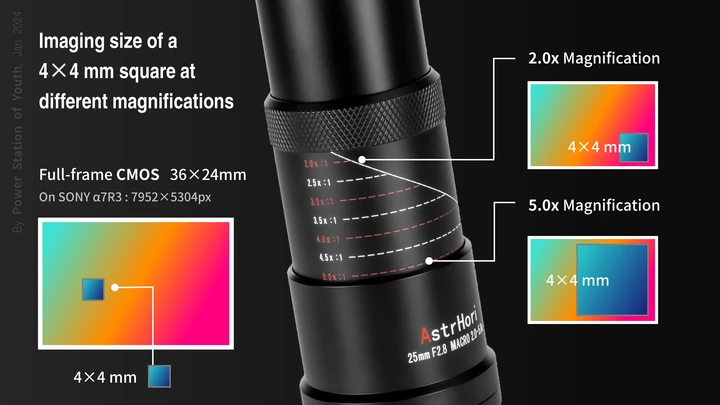
Fig. Magnification Principle
During macro photography, light is amplified through the optical path in the lens to the sensor, allowing details of the object to be seen and recorded more clearly. With this lens, for example, with a full-frame 36×24mm sensor, an object 4mm in width will occupy 22% of the width of the frame (2.0x magnification) to 56% of the width of the frame (5.0x magnification), yielding a clear image rich in detail.
Spessartine
The first subject photographed was spessartine growing on albite.
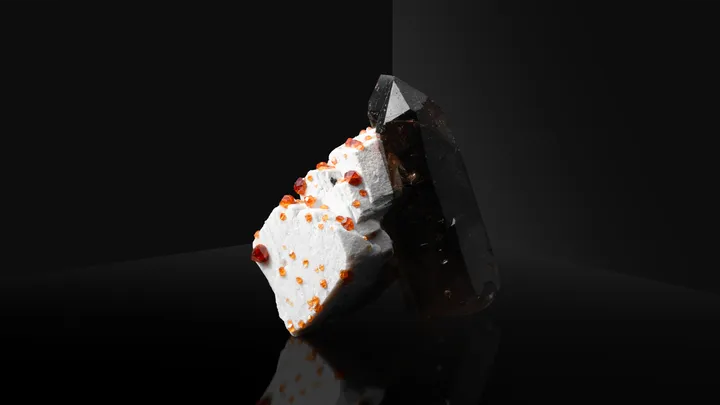
Fig. Spessartine (Orange), Albite (White) and Smoky Quartz (Black)
Under the macro lens, the structure of the crystal (section) is very clear. Single-light illumination is used, and the diagram of illumination is shown below. In order to ensure a more pure shooting effect, a soft mask should be set up for the whole shooting environment. A micrometer head is used to place the sample, which facilitates fine adjustment during the shooting process.
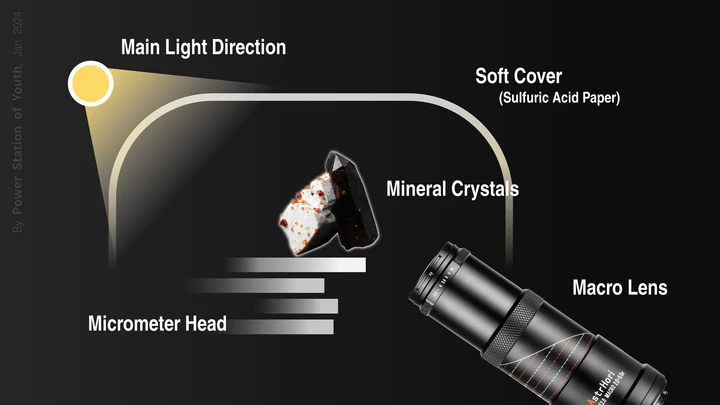
Fig. Light Distribution Schematic

Fig. Shooting Site
The 25mm focal length provides a longer working distance for shooting compared to a medium telephoto of around 100mm, without the need for the lens to be close to the sample. Under these conditions, it allows the photographer to adopt a wider variety of shooting angles while protecting the sample. A single shot at wide angle provides a relatively greater depth of field, but it is difficult (and unnecessary) to get the front and back of the sample clear within a single shot, even at F16. As you can see in the image, only a small portion of the sample is sharp in each shot, so by adjusting the focus position and stacking multiple "sharp" images from different locations in post, we can get both front and back sharp images.
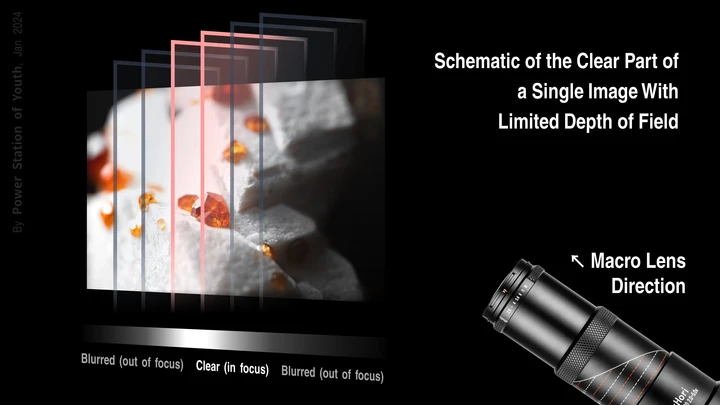
Fig. Depth of Field (Dof) Slice Schematic
I use Helicon Focus software for compositing. This software automatically recognises the parts of each image that are in focus, so that a complete clear image can be stitched together. At the right angle, the lines of crystal growth are visible. The reddish-orange garnets are set among the snow-white albite, giving them the appearance of "pearls large and small cascading on a plate of jade".
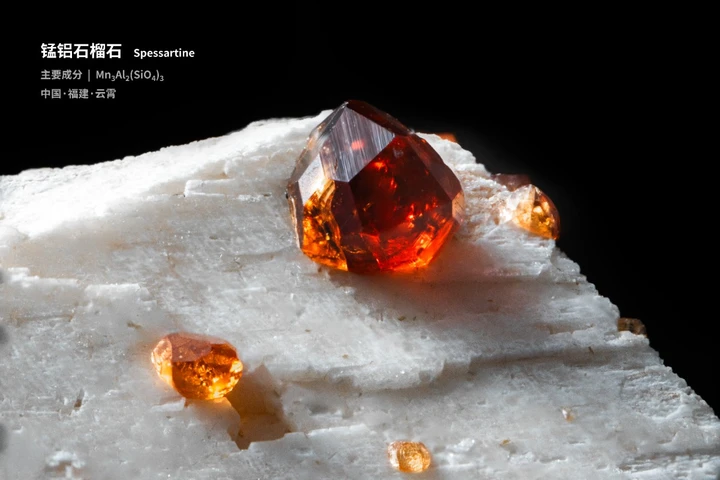
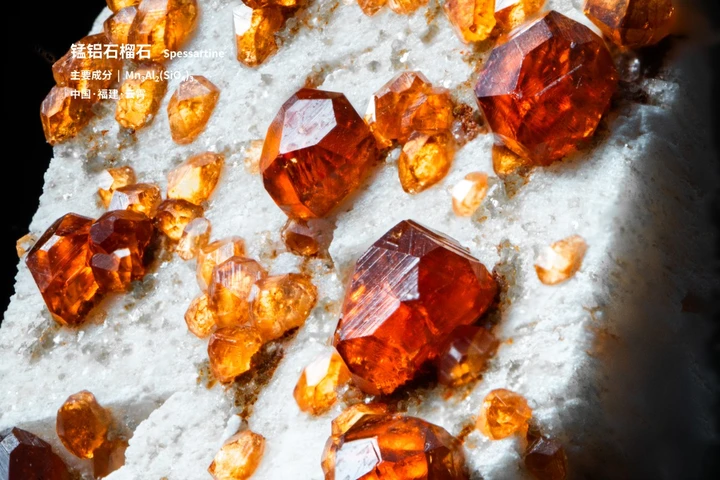
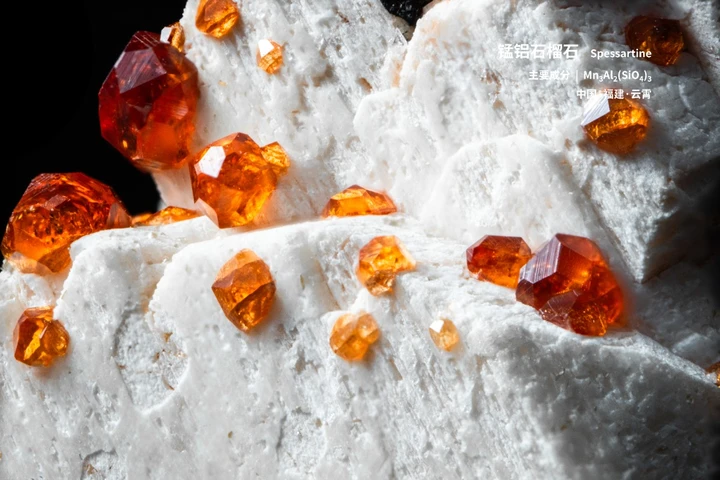

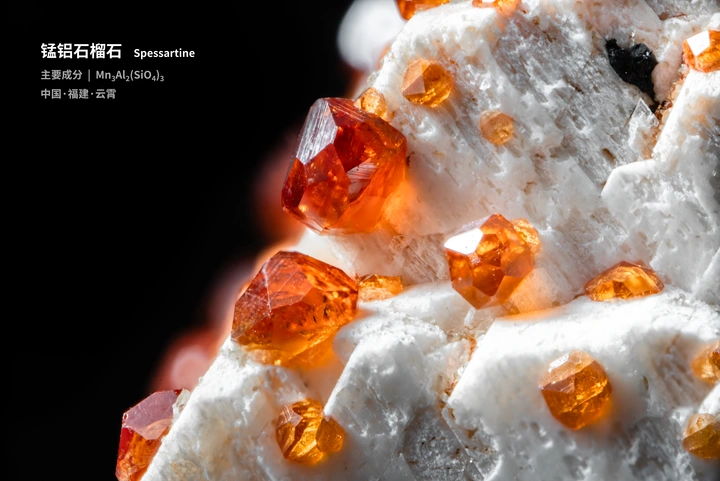
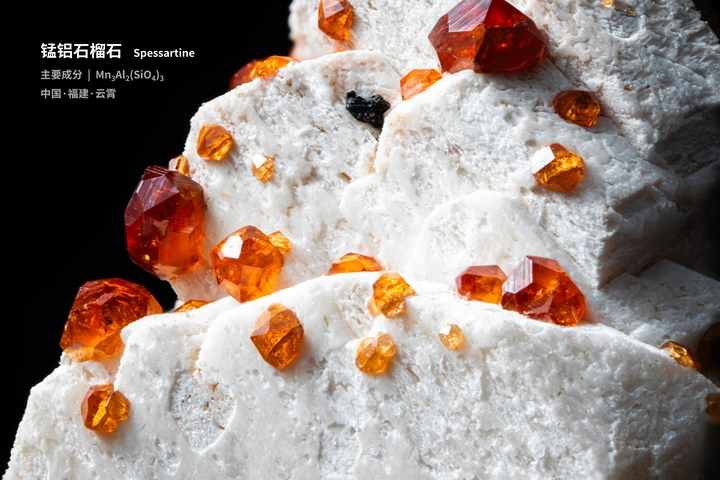
Metal Lic Dendrite
A metal displacement reaction is a simple chemical reaction that in essence can be viewed as a primary cell reaction. The active anode metal loses electrons in the reaction, while the cathode metal ions gain electrons and are converted into metal atoms. In this reaction process, metal atoms on the surface of the negative electrode is often not uniform deposition but dendritic growth. This dendritic structure is a complex non-equilibrium thermodynamic phenomenon, forming a variety of forms, including mossy, dendritic, needle-like and other different types. The dendritic structures of metallic lead and metallic silver photographed here are based on this reaction:

During the growth of dendrites, there is often a common "plane" of these dendrites, which is very reflective and shows the original metallic lustre. In the case of lead, for example, the reflective parts appear silver-white, while the backlit parts appear lead-grey. With the right composition, the beauty of the chemical reaction is revealed.
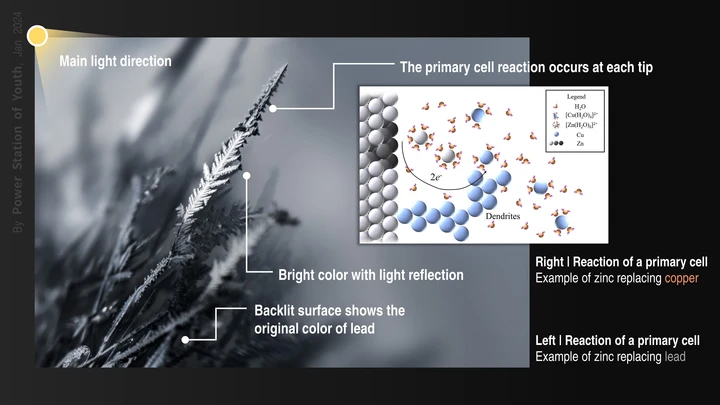
Fig. Schematic Diagram of a Metal Displacement Reaction (Primary Cell)
In different images, we can see the growth process of metallic dendrites. The metallic lead dendrites are spread out like feathers or sharp like pine needles, showing a "black and white" visual effect; the metallic silver dendrites are more loose, with reflections of silver particles in a romantic way.
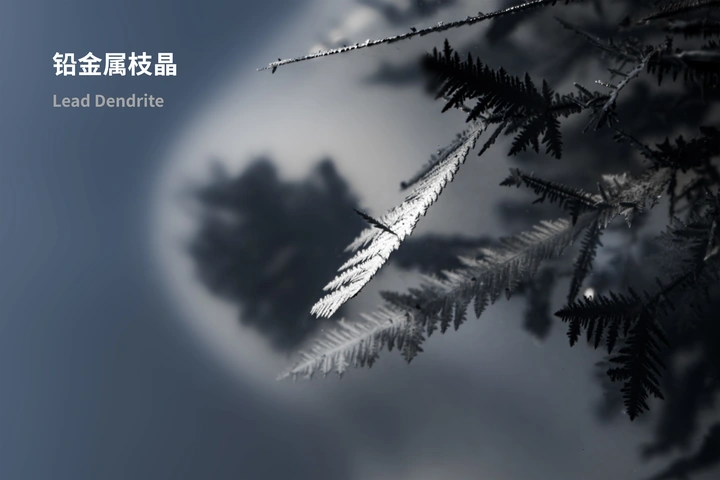


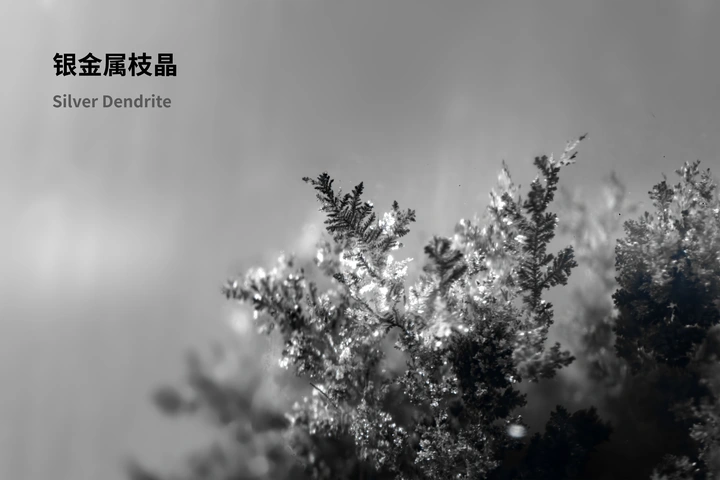


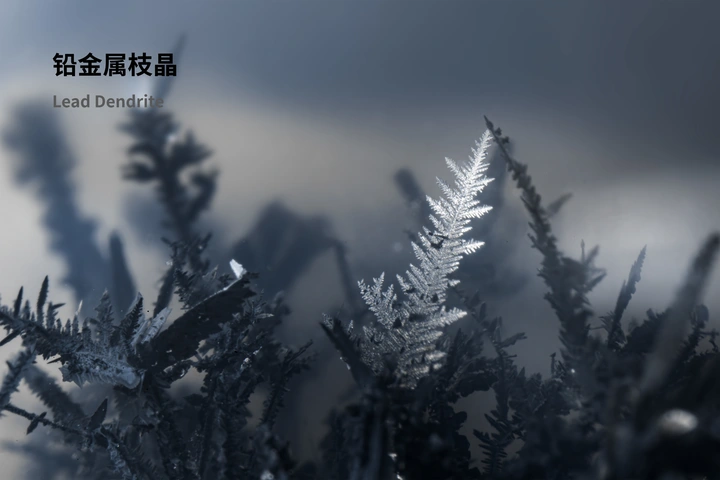
These images basically use a magnification of 3.0-5.0x to record the rich details of the dendrites. Unlike spessartine, which use multiple stacks, these images were taken in a single shot, preserving the spatial relationship between the front and back and simplifying the image.
The AstrHori 25mmF2.8 2.0-5.0x lens is not only capable of photographing chips, plants and animals, but also performs very well in photographing minerals and chemical reactions. With more observation, the subjects will become more and more colourful, opening the door to the microscopic world for us.
Presented by AstrHori and Power Station of Youth
Author: Ni Jiazhou(DawnTideNN)
Translator: Yan Jiaxin
————————————
DawnTideNN
————————————
Member of the Seeker Photography Group
Longcheng
Member of the Youth Branch of Changzhou Photographers Association
AstrHori Cooperative Photographer
LUMIX Cooperative Photographer
-THE END-





